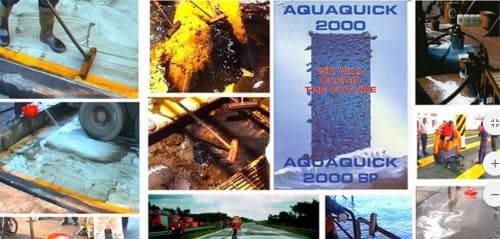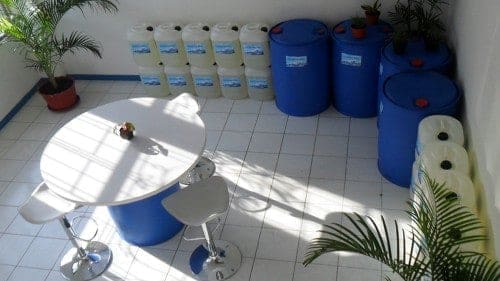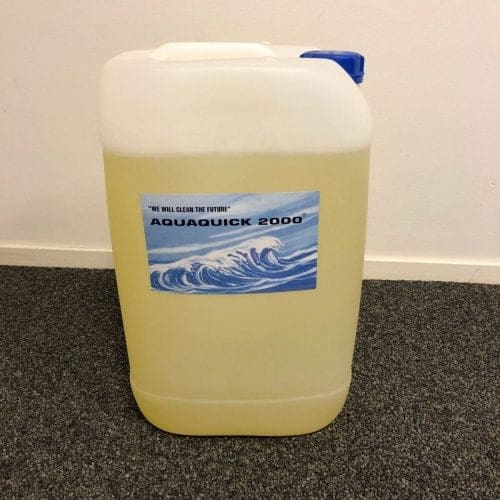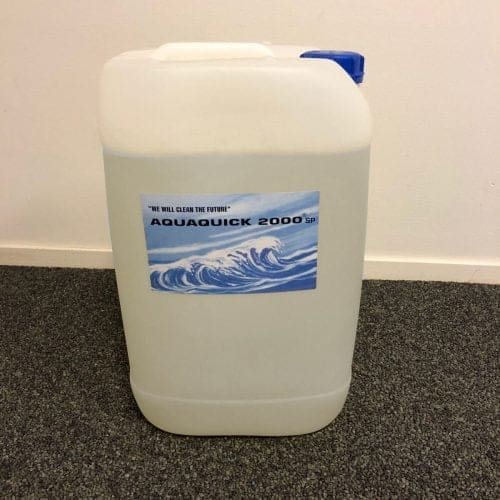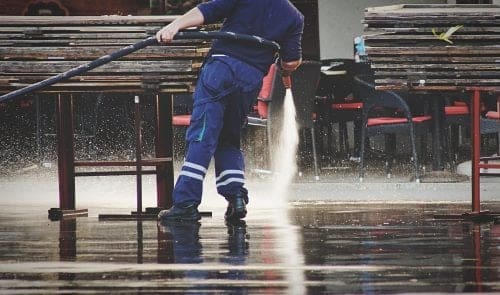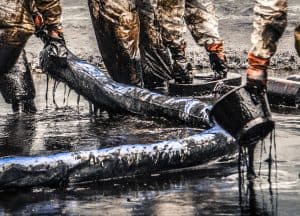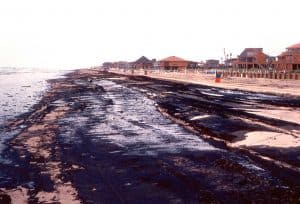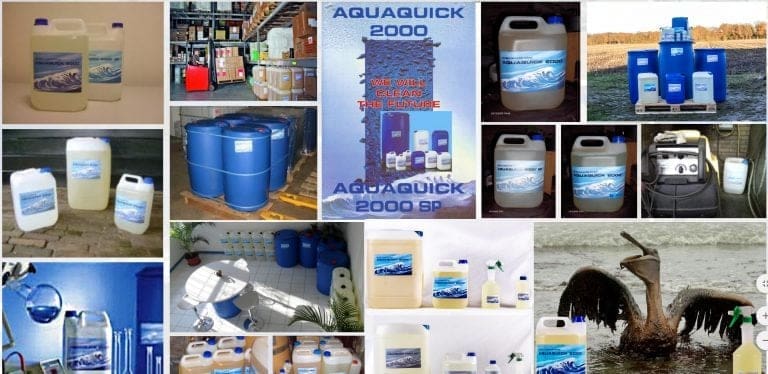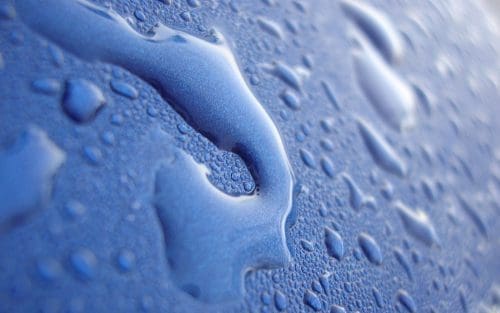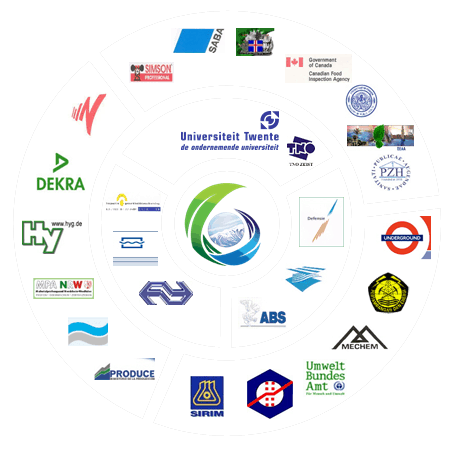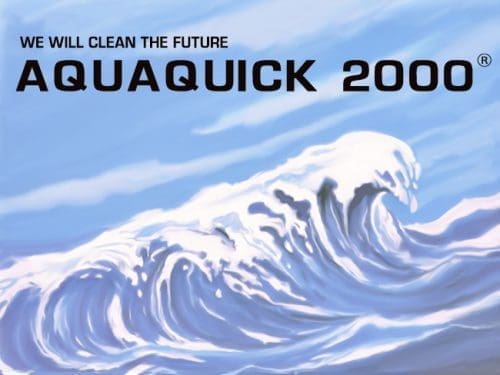Los vertidos de petróleo son una amenaza medioambiental omnipresente, capaz de causar grandes daños a los ecosistemas. Esta completa guía profundiza en lo que se debe y no se debe hacer en caso de vertido de petróleo, haciendo hincapié en la importancia de una actuación rápida, una detección adecuada y métodos de limpieza respetuosos con el medio ambiente. Además, se analizan en profundidad diversas soluciones para los vertidos de petróleo, con especial atención a los absorbentes orgánicos.
Los vertidos de petróleo suelen producirse como resultado de actividades humanas relacionadas con la extracción, el transporte y el almacenamiento de petróleo. Comprender los diversos mecanismos que subyacen a los vertidos de petróleo es crucial para desarrollar medidas preventivas eficaces.
- Accidentes marítimos: Una de las causas más comunes de los vertidos de petróleo son los accidentes marítimos en los que se ven implicados petroleros, cargueros o plataformas de perforación en alta mar. Las colisiones, encalladuras o fallos estructurales pueden romper los cascos de estos buques, provocando el vertido de grandes cantidades de petróleo a las aguas circundantes.
- Fugas en oleoductos: Los oleoductos, que recorren grandes distancias en tierra y bajo el agua, son susceptibles a la corrosión, los fallos mecánicos o los daños externos. Las fugas de estos oleoductos pueden provocar importantes vertidos de petróleo, que afectan a los ecosistemas terrestres y acuáticos.
- Accidentes laborales: Las instalaciones dedicadas a la producción, el refinado y el almacenamiento de petróleo pueden sufrir accidentes como averías del equipo, explosiones o errores humanos. Estos incidentes pueden provocar el vertido repentino de petróleo al medio ambiente, causando contaminación y daños medioambientales.
- Catástrofes naturales: Las catástrofes naturales, como huracanes, terremotos o tsunamis, también pueden contribuir a los vertidos de petróleo. Estos sucesos pueden dañar las infraestructuras petrolíferas, romper oleoductos o hacer zozobrar embarcaciones cargadas de petróleo, liberando petróleo en las masas de agua y agravando el impacto medioambiental.
En general, abordar las causas profundas de estos incidentes y aplicar medidas de seguridad estrictas son pasos esenciales para prevenir y mitigar los vertidos de petróleo.
I. Impacto medioambiental de las mareas negras
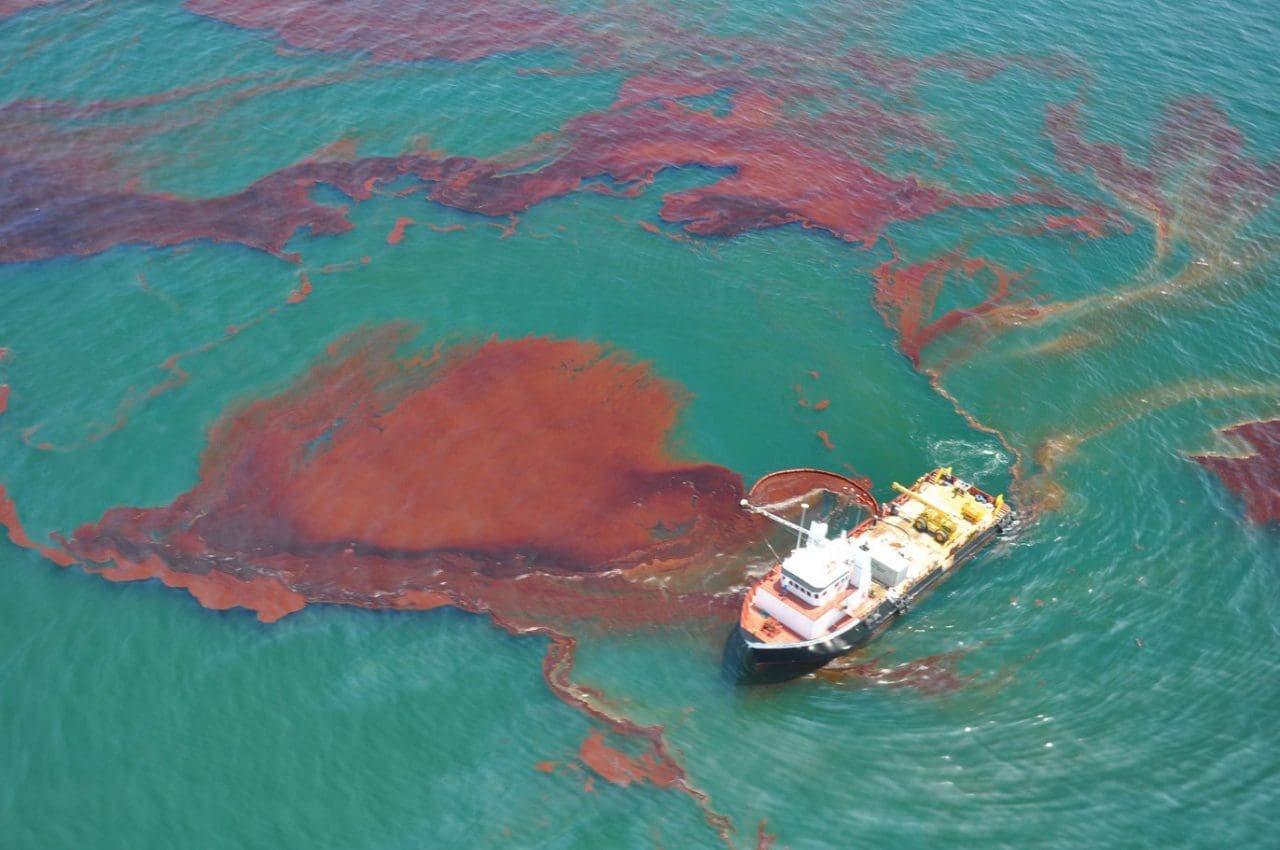
A. Contaminación del suelo
Cuando se produce un vertido de petróleo, éste puede filtrarse en el suelo y contaminarlo. El impacto en la calidad del suelo es profundo y afecta a su capacidad para sustentar la vida vegetal y las comunidades microbianas. Esta contaminación altera el equilibrio natural de los ecosistemas, por lo que es esencial abordar el problema con prontitud para evitar daños a largo plazo.
B. Contaminación del agua
Una de las consecuencias más inmediatas y graves de los vertidos de petróleo es la contaminación del agua. Cuando el petróleo entra en las masas de agua, forma manchas que pueden extenderse rápidamente y cubrir grandes extensiones. El petróleo no sólo supone una amenaza directa para la vida acuática al asfixiar y envenenar a los organismos, sino que también afecta a la calidad del agua, con repercusiones ecológicas duraderas.
C. Daños a la fauna
Los vertidos de petróleo tienen efectos devastadores en la fauna. Los animales acuáticos, como peces, aves marinas y mamíferos marinos, pueden sufrir la exposición directa al petróleo. El petróleo que recubre sus plumas o su pelaje reduce su flotabilidad, dificulta su aislamiento y puede provocarles hipotermia. La ingestión de presas contaminadas por hidrocarburos amplifica aún más el impacto, causando daños internos y perturbando ecosistemas enteros.
D. Consecuencias ecológicas a largo plazo
Las consecuencias de los vertidos de petróleo van más allá del incidente inmediato. Incluso después de los esfuerzos de limpieza visibles, los efectos persistentes en los ecosistemas pueden persistir durante años. La lenta recuperación de las zonas afectadas pone de relieve la importancia de aplicar medidas de saneamiento exhaustivas y eficaces.
II. Detección y respuesta a las mareas negras
A. Métodos de detección
La detección oportuna de los vertidos de petróleo es crucial para una respuesta rápida. Para identificar y evaluar el alcance de un vertido se emplean diversos métodos, como imágenes por satélite, reconocimientos aéreos y vigilancia sobre el terreno. La integración de tecnologías avanzadas aumenta la eficacia de la detección, lo que permite una respuesta más rápida y específica.
B. Acciones de respuesta inmediata
Cuando se detecta un vertido de petróleo, las medidas de respuesta inmediata son esenciales para minimizar su impacto. Los pasos principales incluyen la contención de la propagación del petróleo, la identificación y tratamiento de la fuente y la puesta en marcha de medidas de limpieza. Los esfuerzos de respuesta rápida son fundamentales para evitar la escalada del incidente y reducir el daño medioambiental general.
III. Evolución de las tecnologías de limpieza de vertidos de petróleo
A. Absorbentes ambientales
Una solución prometedora para la limpieza de vertidos de petróleo es el uso de absorbentes ambientales. Estos materiales están diseñados para absorber el petróleo de forma selectiva y repeler el agua. ABC Balancing Beads ofrece un innovador absorbente orgánico de petróleo con un 25% más de capacidad de absorción que los absorbentes convencionales. Esta solución biodegradable está potenciada por microbios, lo que facilita la biorremediación de contaminantes y garantiza un enfoque más sostenible de la limpieza de vertidos de petróleo.
B. Biorremediación
La biorremediación implica el uso de microorganismos para descomponer y neutralizar contaminantes, incluido el petróleo. Los microbios presentes de forma natural en el medio ambiente pueden aprovecharse para acelerar la degradación de los componentes del petróleo. Este enfoque respetuoso con el medio ambiente favorece la restauración de los ecosistemas afectados con el paso del tiempo.
C. Dispersantes químicos
Los dispersantes químicos son sustancias que se aplican para descomponer el petróleo en gotas más pequeñas, haciéndolo más accesible a la degradación microbiana. Aunque son eficaces en algunos casos, su uso es objeto de debate debido a sus posibles efectos ecológicos secundarios. Lograr un equilibrio entre la eficacia de la limpieza y el impacto ambiental sigue siendo un reto en la aplicación de dispersantes.
IV. Cooperación y preparación internacionales
A. Esfuerzos de colaboración
Los vertidos de hidrocarburos suelen traspasar las fronteras nacionales, lo que exige una colaboración internacional para una respuesta y mitigación eficaces. Organizaciones como la Organización Marítima Internacional (OMI) trabajan para establecer directrices y marcos para los Estados miembros, fomentando un enfoque unificado de la respuesta a los vertidos de petróleo a escala mundial.
B. Preparación y formación
La preparación es un componente clave para mitigar el impacto de los vertidos de petróleo. Los ejercicios de formación periódicos, los simulacros y el desarrollo de planes de respuesta son esenciales para garantizar que las comunidades locales, las industrias y los organismos gubernamentales estén equipados para gestionar los incidentes de vertidos de petróleo con prontitud y eficacia.
Los vertidos de hidrocarburos siguen constituyendo un importante reto medioambiental que requiere esfuerzos constantes de detección, respuesta y mitigación. El impacto ambiental, que abarca la contaminación del suelo y del agua y los daños a la fauna, pone de relieve la urgencia de aplicar soluciones eficaces.
Las tecnologías en evolución, como los absorbentes ambientales y la biorremediación, ofrecen vías prometedoras para la limpieza sostenible de los vertidos de petróleo. La colaboración internacional y las iniciativas de preparación mejoran aún más la respuesta mundial a estas amenazas medioambientales. En nuestro empeño por conseguir un medio ambiente más limpio y seguro, la innovación y la cooperación continuas son esenciales en la lucha contra los efectos perjudiciales de los vertidos de petróleo.
I. Comprensión de la gravedad de las mareas negras:
Los vertidos de petróleo, ya se deban a grandes incidentes marítimos o a fugas de tanques de almacenamiento a pequeña escala, pueden provocar catástrofes medioambientales. Los efectos nocivos se extienden al suelo, las masas de agua y la fauna, lo que subraya la necesidad de una respuesta inmediata y bien preparada para mitigar las consecuencias. La mera escala del impacto subraya la necesidad de medidas proactivas.
II. Qué NO hacer ante una marea negra:
A. Evite utilizar agua: El agua, cuando se utiliza para limpiar un vertido de petróleo, tiende a esparcirlo, lo que dificulta su contención y recuperación. Este enfoque contraproducente agrava el impacto ambiental, por lo que se necesitan métodos de limpieza alternativos. A base de agua productosPara evitar una mayor contaminación y daños al medio ambiente, deben evitarse los detergentes. Nunca se insistirá lo suficiente en la importancia de seleccionar los materiales de limpieza adecuados.
B. Que no haya llamas cerca del vertido: Encender llamas cerca de un vertido de petróleo es una práctica peligrosa que puede provocar incendios, intensificando el impacto medioambiental. La combustión del petróleo plantea riesgos adicionales, por lo que debe evitarse estrictamente cualquier intento de ignición durante los esfuerzos de respuesta al vertido para evitar que una situación ya de por sí grave se agrave. Comprender las posibles consecuencias de los incendios en el contexto de los vertidos de petróleo es crucial para planificar una respuesta eficaz.
C. Evite las fugas de aceite: Permitir que el petróleo se filtre en los desagües pluviales o cursos de agua agrava la contaminación, lo que complica las tareas de limpieza. Las consecuencias medioambientales de las aguas contaminadas son graves, afectan a la vida acuática y plantean problemas a largo plazo. Evitar que el petróleo penetre en las fuentes de agua es crucial para minimizar los daños medioambientales. Las estrategias eficaces de contención desempeñan un papel fundamental para evitar que el petróleo se siga extendiendo.
III. Limpieza adecuada de un vertido de petróleo:
A. Detección de una marea negra:
- Busque charcos de aceite en el suelo o en el agua: Los charcos visibles de petróleo son indicativos de un vertido y sirven como punto de partida tangible para los esfuerzos de respuesta. Identificar estos charcos con prontitud es esencial para una rápida contención.
- Identifica el brillo de la superficie del agua: El brillo arco iris característico del agua es una señal visual que refleja la presencia de petróleo. Reconocer este brillo ayuda a determinar la extensión del vertido y a planificar la limpieza.
- Huela el aire en busca de olor a petróleo: El olor característico del petróleo puede ayudar a detectar vertidos, especialmente en situaciones en las que las señales visuales pueden ser menos evidentes. El sentido del olfato se convierte en una valiosa herramienta en la detección precoz de derrames.
B. Encontrar la fuente:
Localizar el origen de un vertido de petróleo es crucial para una contención eficaz y limpieza. Aunque la fuente puede estar oculta bajo tierra o bajo el agua, pistas como manchas de petróleo en superficies cercanas y un brillo que se extiende desde el vertido pueden orientar los esfuerzos de respuesta. Determinar la fuente ayuda a prevenir futuros vertidos al abordar la causa raíz.
C. Detener el flujo:
- Válvulas de cierre: Si el vertido de petróleo procede de un depósito o un oleoducto, cerrar las válvulas es un paso fundamental para detener el flujo y evitar una mayor contaminación. Conocer la ubicación y el funcionamiento de las válvulas es crucial para una respuesta rápida.
- Utilizar diques o barreras absorbentes: En aguas abiertas, la utilización de diques o barreras absorbentes ayuda a contener el vertidoLa elección del método de contención depende del entorno y de las características del vertido. La elección del método de contención depende del entorno y de las características del vertido. aceite.
D. Limpieza:
Una limpieza adecuada es esencial, y evitar el uso de productos de base acuosa es crucial. Los absorbentes ecológicos, como los que ofrece ABC Balancing Beads, son una solución óptima. Estos absorbentes orgánicos de aceite tienen un 25% más de absorción que sus homólogos ordinarios y son biodegradables. Su fórmula mejorada con microbios facilita la biorremediación de contaminantes y la absorción de una amplia gama de líquidos, proporcionando un enfoque eficaz y ecológico para la limpieza de vertidos de petróleo. Elegir los materiales de limpieza adecuados garantiza una respuesta exhaustiva y sostenible.
IV. Absorbentes ambientales - La solución ideal:
Aquaquick ofrece un absorbente de aceite orgánico que destaca por su capacidad de absorción superior. Con un 25% más de absorción que los absorbentes ordinarios, esta solución biodegradable está potenciada por microbios para biorremediación eficaz de contaminantes. Su versatilidad le permite recoger una amplia gama de líquidos, lo que lo convierte en la opción ideal para diversas situaciones de vertido. Elegir el absorbente adecuado es crucial para evitar daños mayores por vertidos de petróleo y garantizar un enfoque sostenible de las labores de limpieza.
V. Ideas adicionales para hacer frente a los vertidos de petróleo:
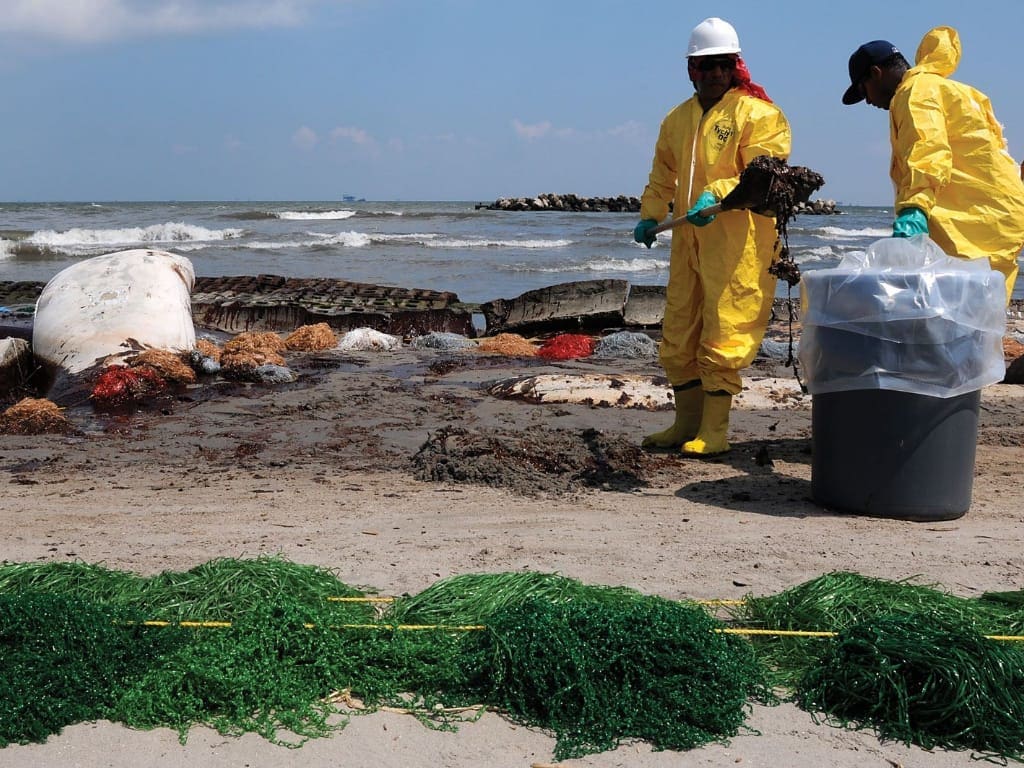
A. Lo que hay que hacer en caso de vertido de petróleo:
- Actúa rápido: La actuación inmediata es crucial para atajar el vertido con prontitud y evitar mayores daños medioambientales. Un retraso en la respuesta puede provocar un incidente más grave. La rapidez de la respuesta puede influir significativamente en la eficacia de los esfuerzos de contención y limpieza.
- Protégete: Utilice el equipo de protección individual (EPI) adecuado y advierta a los demás mediante señales. Ventile la zona si hay un fuerte olor a combustible. Dar prioridad a la seguridad durante las labores de respuesta garantiza el bienestar de las personas implicadas.
- Detener el flujo de aceite: Identifique la fuente, cierre las válvulas y contenga el vertido para evitar que se extienda a terrenos o desagües vecinos. Detener el flujo es un paso fundamental para evitar la escalada del vertido y reducir el impacto medioambiental global.
- Notifique los vertidos en zonas sensibles desde el punto de vista medioambiental: Póngase en contacto con las autoridades competentes y solicite asesoramiento profesional para la limpieza, especialmente si el vertido ha llegado a arroyos, estanques o lagos. La colaboración con los organismos medioambientales garantiza una respuesta integral en zonas sensibles.
- Solicite una inspección profesional de la cisterna: Solicite que un técnico cualificado inspeccione el depósito y determine las reparaciones o sustituciones necesarias. Las inspecciones periódicas de tanques contribuyen a la detección precoz de posibles problemas, evitando futuros vertidos.
- Póngase en contacto con su compañía de seguros: Infórmeles del vertido y de los posibles requisitos de limpieza, ya que puede estar cubierto por los costes de limpieza y la pérdida de petróleo. La coordinación con los proveedores de seguros garantiza el apoyo financiero para el proceso de limpieza.
B. Lo que no se debe hacer en caso de vertido de petróleo:
- Nunca ignores un vertido: Es crucial actuar de inmediato, ya que un vertido menor puede convertirse rápidamente en un incidente más grave. Ignorar un vertido aumenta la probabilidad de daños medioambientales y complica las tareas de limpieza.
- Dar prioridad a la seguridad: No se ponga en peligro durante la limpieza. Si la situación es peligrosa o inmanejable, busque ayuda profesional a través de la línea directa de incidentes de contaminación. La seguridad debe ser siempre la máxima prioridad para evitar lesiones o riesgos para la salud.
- Las paradas temporales de fugas no son soluciones permanentes: Utilízalas sólo como medida temporal mientras esperas a un ingeniero o un nuevo depósito. Las medidas temporales son esenciales para evitar una escalada inmediata, pero deben ir seguidas de soluciones permanentes para evitar que se repitan.
- Evite utilizar productos químicos o detergentes: Estos pueden agravar la contaminación. En su lugar, opte por métodos de limpieza respetuosos con el medio ambiente. Los productos químicos y detergentes pueden introducir contaminantes adicionales, contrarrestando los objetivos del esfuerzo de limpieza.
- No tirar el aceite derramado por los desagües: La mayoría de los desagües desembocan en cursos de agua, lo que provoca graves problemas de contaminación. Lavado aceite en los desagües agrava el impacto ambiental, afectando a la calidad del agua y a los ecosistemas acuáticos.
VI. Enfoque de sentido común para las soluciones a los vertidos de petróleo:
A. Acción inmediata: Actuar inmediatamente tras detectar un vertido de combustible es la piedra angular de una respuesta eficaz ante un vertido de petróleo. Una respuesta rápida ayuda a minimizar el impacto en el medio ambiente, evitando que un vertido menor se convierta en un incidente más grave. Nunca se insistirá lo suficiente en la importancia de la formación y la preparación para lograr tiempos de respuesta rápidos.
B. Consideraciones medioambientales: Reconocer las consecuencias medioambientales de los vertidos de petróleo es vital para tomar decisiones informadas durante los esfuerzos de respuesta. El objetivo es evitar que el vertido se extienda y cause contaminación inmediata y futura. Comprender los posibles efectos a largo plazo ayuda a adaptar las estrategias de respuesta para obtener resultados sostenibles.
C. Elección de soluciones sostenibles: Optar por soluciones respetuosas con el medio ambiente, como los absorbentes orgánicos de petróleo, contribuye a un enfoque sostenible de la limpieza de vertidos de petróleo. Los absorbentes de ABC Balancing Beads ejemplifican este compromiso, ofreciendo una limpieza eficaz al tiempo que minimizan el impacto medioambiental. Dar prioridad a las soluciones sostenibles garantiza que el proceso de limpieza se ajuste a objetivos más amplios de conservación del medio ambiente.
Conclusión:
Los vertidos de petróleo exigen una respuesta proactiva e informada para minimizar los daños medioambientales. La comprensión de lo que se debe y no se debe hacer en la gestión de vertidos de petróleo, junto con la utilización de soluciones respetuosas con el medio ambiente como el absorbente orgánico ABC Balancing Beads, garantiza un enfoque integral y eficaz de la gestión de vertidos de petróleo.
Al dar prioridad a la acción rápida, las medidas de limpieza responsables y las soluciones sostenibles, los particulares y las organizaciones desempeñan un papel vital en la protección del medio ambiente frente a las consecuencias nocivas de los vertidos de petróleo. La integración de tecnologías avanzadas y la investigación en curso mejoran aún más la eficacia de los esfuerzos de respuesta a los vertidos de petróleo, fomentando un futuro resistente y respetuoso con el medio ambiente.

